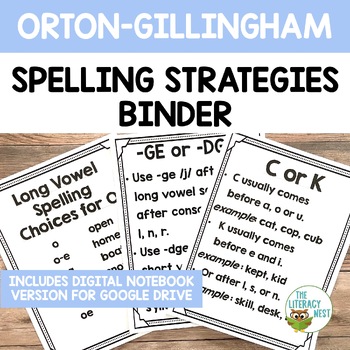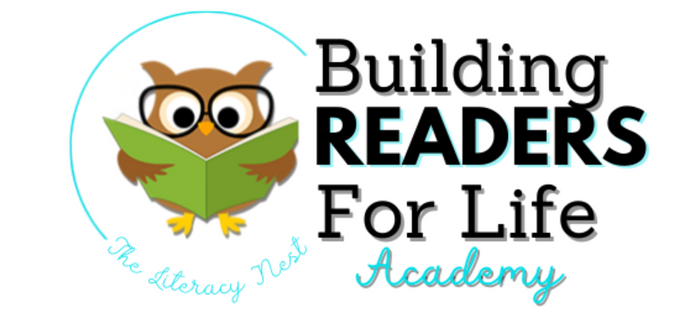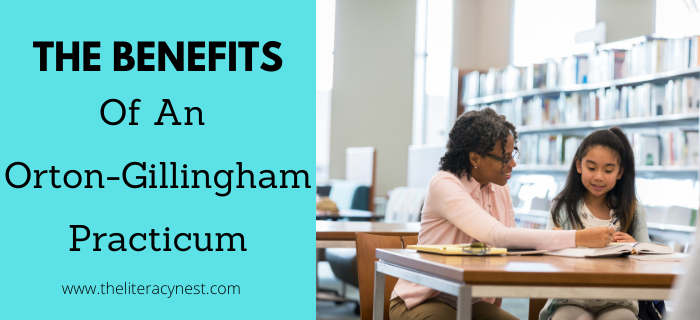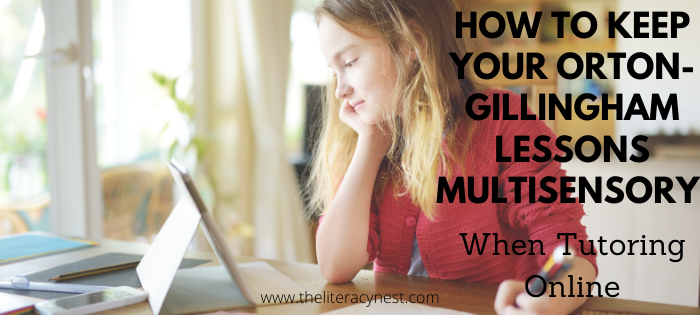The Organized Orton-Gillingham Teacher: Part 2
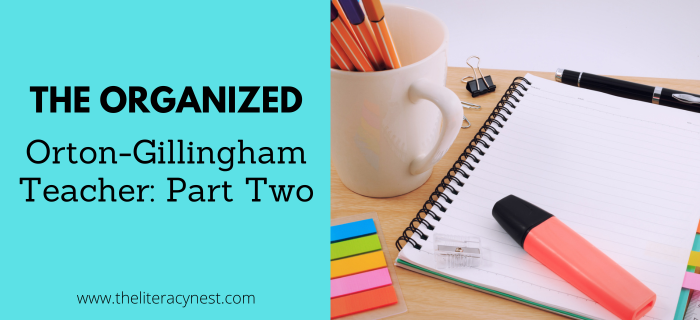
In part 1 of this series, we discussed modeling organization, as an organized Orton-Gillingham teacher, for our students both through our own organized space and in more explicit ways such as how to set up a dictation paper. Organization and executive functioning skills are frequent areas of difficulty for students with dyslexia. By implementing some organizational strategies with them during their Orton-Gillingham time, we can facilitate the carryover of organizational skills to other aspects of their school day.
Why help students with the organization of their own materials?
Modeling how to organize is rarely enough for someone who struggles with organization. While eventually, students do tend to find their own hacks that work for them, this can be a long and inefficient process. Having someone build an organizational system with them and teach them how to use it is going to help them reach the point of being able to make personalized tweaks more quickly.
One of the principles of Orton-Gillingham instruction is to be direct and explicit. This applies not only to phonemes or spelling rules but to supporting skills and behaviors as well, such as organization.
The benefits of providing students with their own supplies that they must access every time they work with you:
Teaching during a pandemic presented many challenges, but also several opportunities. I typically had materials such as pencils, whiteboard markers, and highlighters in easy-to-access jars on my table. Manipulatives such as cubes, counters, dice, felt squares, and items for tracing such as sand, beads, plastic canvas, and carpet squares were stored for my convenience in easy to access quickly spots. I was in control of when and where these materials were used. But the pandemic made us rethink shared supplies and how to avoid spending hours wiping down materials and disinfecting spaces.
Whether I was preparing for online lessons where children would need a tutoring tool kit at their disposal or safe in-person tutoring without communal supplies, this shift to individual student-controlled tutoring supplies came with some discoveries about the benefits of this method.
- Students having their own supplies promotes independence.
- Students can practice organizational skills. This promotes executive functioning skills and accountability.
- Students have the opportunity to actively practice consistent routines and procedures.
- But most importantly, this can promote a feeling of success and self-confidence.
10 things to include in a student work bin:
- Tracing materials such as carpet squares or plastic canvas
- Felt squares for syllabication practice
- Pop-it for segmenting phonemes
- Blocks or counters for phonemic awareness activities – I like to provide several options, so students have an element of choice.
- Items for tracking print such as bookmark, EZC highlighting strip, or fun accessories like a witch’s finger.
- Reading book if the student is working on a longer story.
- Personal-size whiteboard
- Phonogram cards
- Dice, game pieces, timer – This is another opportunity for the student to take ownership.
- Alphabet strip/handwriting guide
7 things to include in a student pencil box:
- Several sharpened pencils
- Eraser
- Small pencil sharpener
- Highlighter
- Whiteboard markers
- Several colored markers
- A small eraser or microfiber cloth
The organization of teacher and student notebooks and binders is very individual for each teacher, and often for each student. For example, one student may do well using a regular wire-bound notebook for dictation, while another may need more support in the form of box paper, textured handwriting lines, or handwriting paper that matches what they use at school. In those cases, a looseleaf binder may make more sense.
I like to have a teacher binder where I keep lesson plans, SOAP notes, assessment scoring sheets, parent progress reports, etc. This consists of paperwork that is for my reference and planning purposes. For the student’s use and for the student to maintain, I also typically have a reference notebook or binder and a working notebook or binder. I have also for individual students using a bound collection of reading passages or practice worksheets for reinforcement at home.
7 things to include in a student binder:
- Reference sheets
- Anchor charts
- Mini posters
- Spelling Rules
- Syllable Types
- Phonograms
- Morphemes
- Reading passages
- Word lists
- Dictation sheets
- Grammar or comprehension worksheets
- Learned Words
- Charts or graphs to track learning.
Students would be responsible for adding new information to their reference notebooks, adding new word lists, and updating charts or graphs with the teacher. The teacher would guide them to maintain an organized notebook. Perhaps a reference notebook would be organized into sections by phonemes, graphemes, syllable types, syllable division, and spelling rules.
Check out this helpful reference tool to keep organized: Orton Gillingham Student Notebook With Interactive Notebook Templates
5 things to include in a Student Notebook:
- Dictation
- Handwriting practice
- Student-generated writing such as sentence combining or expansion, practice writing a paragraph, or constructed comprehension responses.
- Sometimes people choose to paste word lists into a composition book or spiral-bound notebook.
- This can represent a timeline of learning.
Download and print each of these student supply checklists!
The most important thing is to work with the space and materials you have available clearly for your student. If it is time for dictation, your student should know exactly where to look. If you want them to check a reference sheet, that should be at their fingertips.
Provide visual prompts for where materials go. A visual schedule may include an image of what materials are needed for that portion of the lesson. Consistently model the procedure and gradually over time have them care for their materials. When students see what is coming up next on the visual schedule, they can begin to know what to expect. They take ownership of what to put away and what to get ready. This is the goal. They can experience a feeling of success and a sense of ownership. When a student independently reaches for a highlighter to mark up a word list or blocks when writing a tricky word in sentence dictation, you are seeing a student who is taking ownership of their learning and beginning to apply their tools and strategies independently.
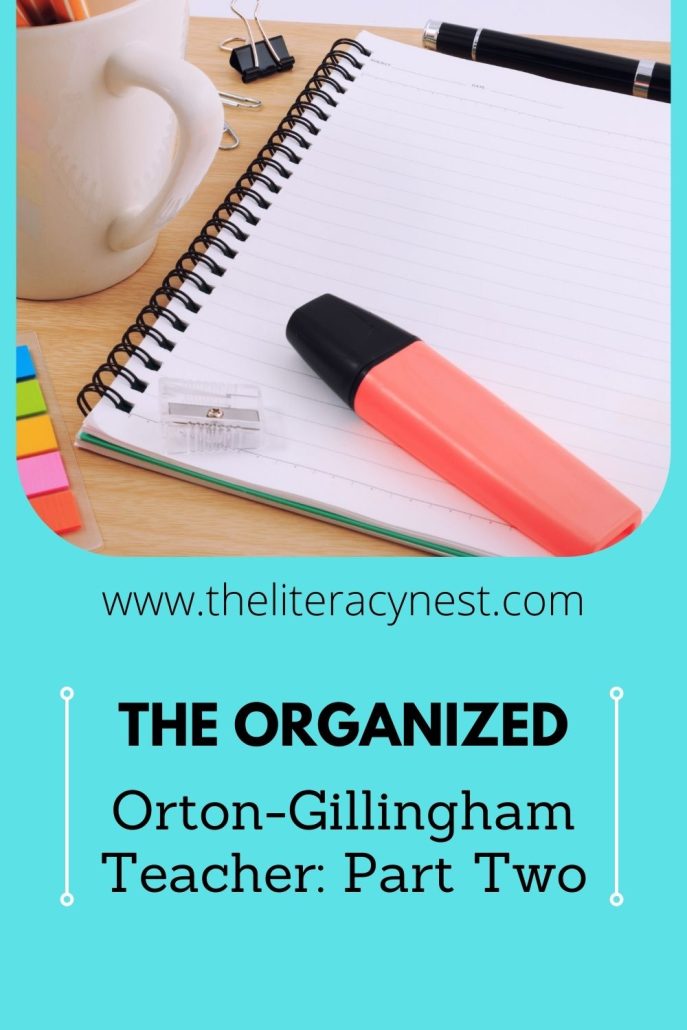
To learn more about how you can support your students’ organizational skills as an organized Orton-Gillingham teacher, sign up for Building Readers for Life Academy. Both educators and families are welcome!
Building Readers for Life Academy is a monthly membership program that empowers educators AND families by diving into structured literacy and strategies for ALL learners. With BRFL Academy, you’ll learn what it takes to help EVERY student become a reader for life.

